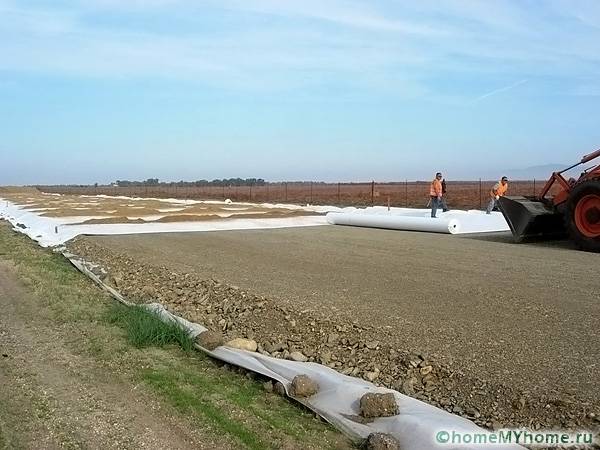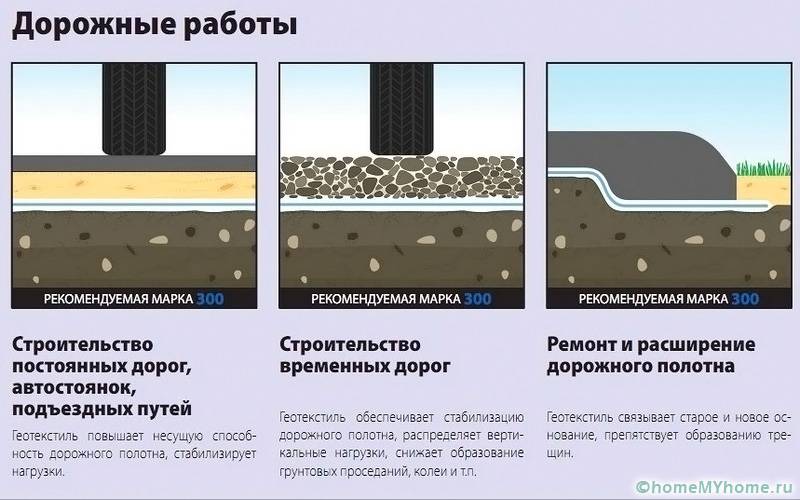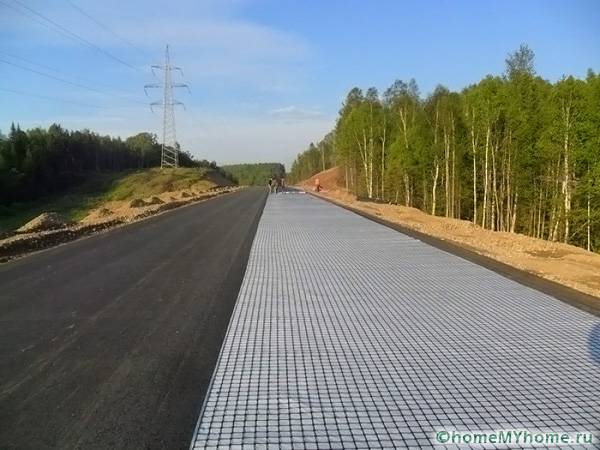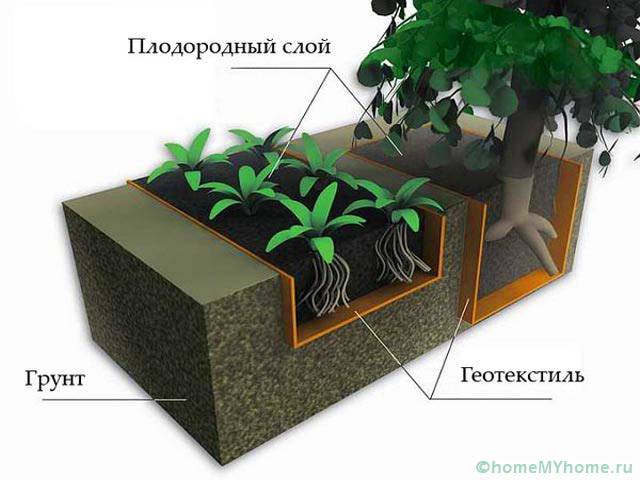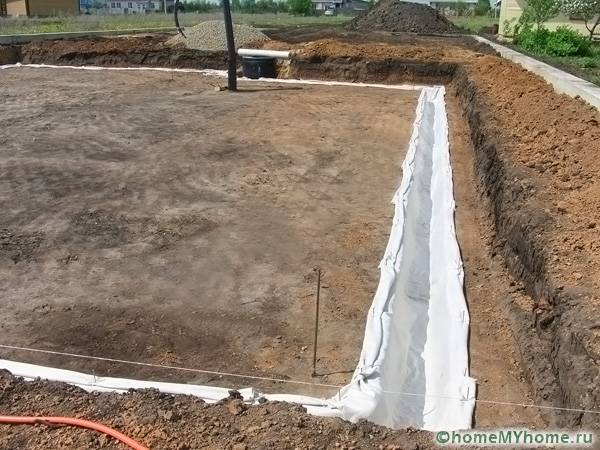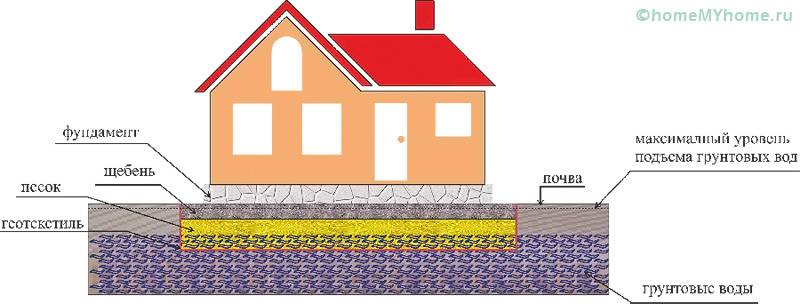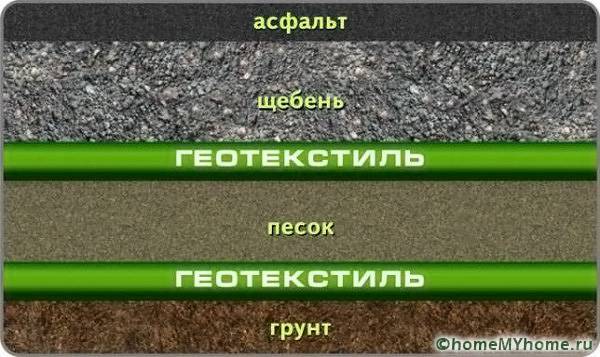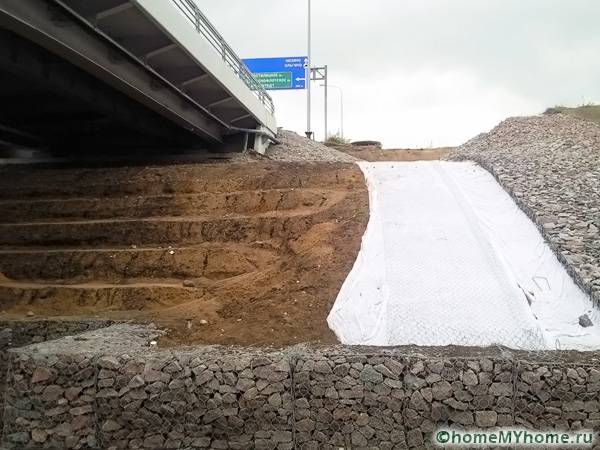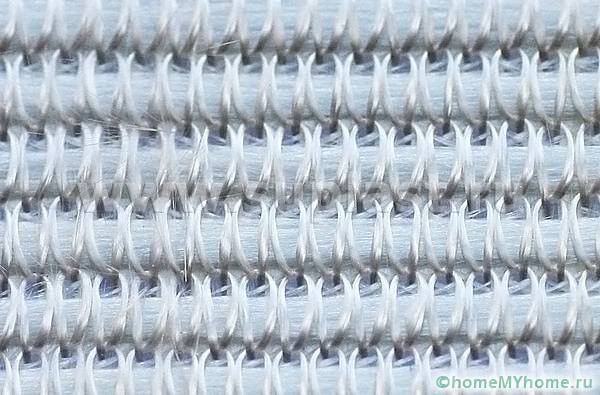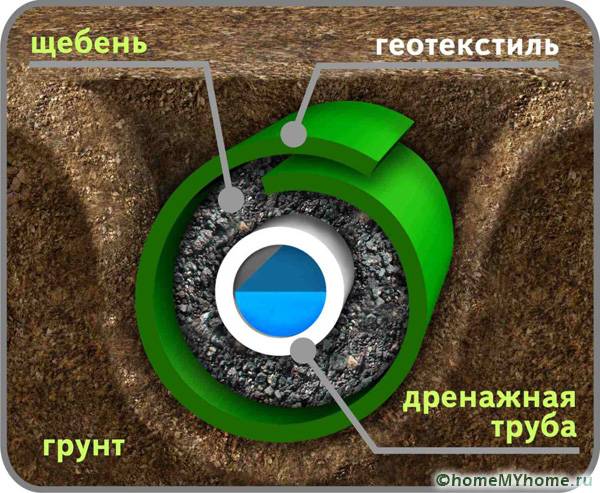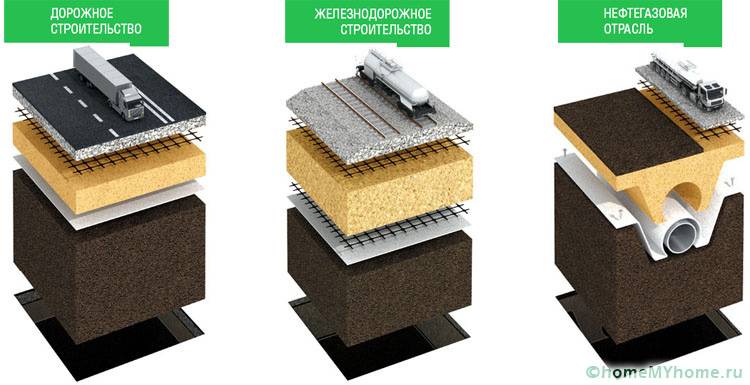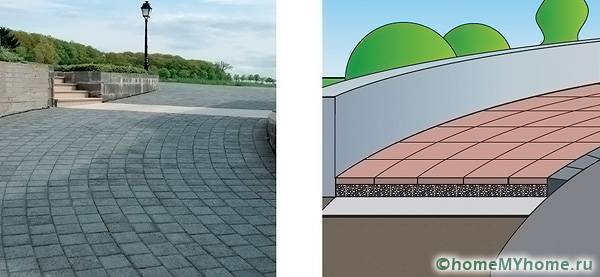Geotextile: what it is and how it is used in construction and landscape design
MMany would like to know: geotextile - what it is and how it is used. It is a knitted or woven fabric that is characterized by significant strength. The material is created by weaving threads from different polymers at a certain angle. Fabrics are provided by manufacturers in rolls. Moreover, the density of matter can be different. A large number of positive qualities help geotextiles to be a versatile raw material.
The content of the article
Geotextile: what it is and how it is used in different fields
Before buying geotextiles, you need to decide what it is and how it is used. It is a product consisting of woven and non-woven fabrics that are created from components of polypropylene and polyesters.
Initially, this material was used only for drainage structures and the construction of construction projects, but then it began to be used for domestic and industrial purposes. Cloths are produced in different volumes and come in different types. The fabric is sold in rolls, from 2 meters to 5.5 meters wide. The length can be from 40 to 150 meters.
The characteristics of raw materials may differ depending on its types. But some of the characteristics are the same for all types of products:
- protects against rodents and insects;
- differs in elasticity;
- has a long service life;
- does not lend itself to corrosion and decay.
With a powerful impact, the integrity of the material is not violated, it simply tightens.Geotextiles are resistant to a variety of processes and chemical influences that occur in the soil. But such a fabric allows water to pass through.
Use in road construction
This material is relevant in many areas of construction. The answer to the question: what is geotextile and how is it used - it helps many to solve many domestic and industrial problems.
In road construction, the canvas is used to create the basis for the future road. With its help, you can make an elastic and durable base, which is resistant to external influences. This increases the service life of the roads and eliminates the frequent need for repair work.
The products are used for laying footpaths made of tiles or paving stones, for strengthening the slopes of the roads and for laying the road surface. Also in road construction, panels are used for the following purposes:
- creation of drainage structures;
- division of bulk systems into layers;
- distribution of different loads;
- filtration of liquid substances;
- protection of individual elements from destruction.
Helpful information! During installation, the technology should be observed. It is important to pre-prepare the surface. The soil is leveled, all large stones and parts of the roots are removed from it.
Use for a summer cottage: geotextiles for garden paths
The use of geotextiles for garden paths is popular. Performing original tracks can be considered important stages formation of landscape design... An important point is the creation of a solid pillow for such structures. In this case, this canvas is used as a substrate for the sand on which the tiles are laid.
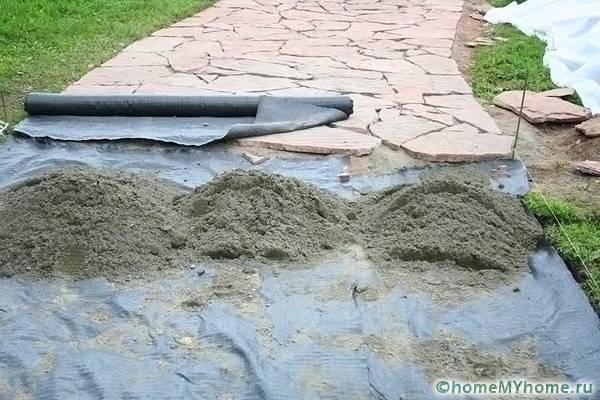
The stability of the paths in the garden is influenced by the correct laying of the geotextile cloth
Geotextile underlays are versatile. It protects against weeds, provides drainage and good bearing function.
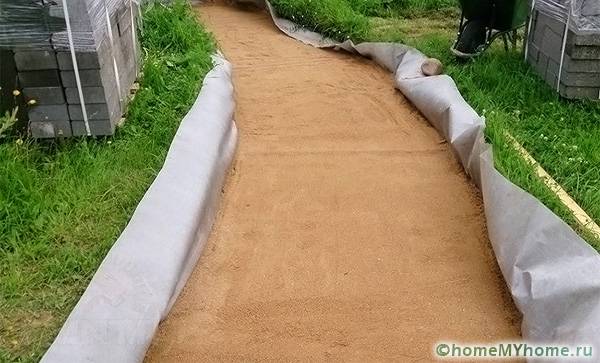
Paths can be of different shapes, which absolutely does not affect their performance when using geotextiles
In addition to arranging the tracks, this material is used for the following works:
- strengthening of slopes greenhouses and beds;
- separation of different landings;
- protection of crops from weeds;
- reinforcement of moist or too soft soil areas;
- use as a warming and covering fabric.
Geotextiles for garden paths enhance the strength of structures and prevent materials from sagging. In landscape design, the material is used to form flower beds and lawns, for arrangement flower beds and lawns, as well as for the installation of alpine slides and the creation of play and playgrounds.
Helpful information! In suburban areas, needle-punched material is often used, the structure of which includes small holes. Such agrofibre is used as a protective and covering material.
How is geotextile used in the construction of houses?
Geotextiles are often used in the construction of houses for the foundation. In order for the base under the building to be distinguished by its strength, a pillow or filling is used for the future foundation.
Geotextile protects the structure from the pressure of melt and groundwater and from soil deformation. It is also worth highlighting the following points:
- the canvas prevents mixing of sand, soil and gravel;
- the load on the base is evenly distributed;
- the bearing capacity of the structure increases;
- the base becomes more stable and stable.
Related article:
Drainage geotextile (geotextile). A separate publication provides detailed guidance on the selection and use of this material for drainage work.
Varieties of geotextiles
Having decided what geotextile is and how it is used, it is worth considering that this product may differ depending on the production technology. The following types of material are distinguished:
- calendered geotextiles are made by bonding fibers using high temperatures, while the fabric has high strength properties, which minimizes the likelihood of breaks;
- needle-punched type is made from propylene and polyester fibers; water can appear through the fabric in the longitudinal and transverse directions;
- knitting and stitching material is made from special fibers of a certain length, for a strong connection of fibers they are stitched with threads.
Helpful information! This material is made from polyester mass. On conveyor belts, bales of such a mass are torn off pieces of fibers, which are converted into separate threads under an air jet. Interestingly, 1 gram of such a thread is 3 km long. After the procedure of fluffing, the threads are transformed into a cloth in a special machine.
What geotextile is recommended for the drainage system?
Geotextile in the drainage system is used as a layer with filtration for perforated highways. Such a lattice is not only filters water, but also prevents silting of gravel bed.
This material prevents different soil layers from mixing. For drainage systems, a product is selected with the following parameters:
- density should be up to 150 g / m2.
- monofilament needle-punched cloth is used;
- filtration coefficient is about 130 m per day;
- pressure strength should not be less than 400-500 N;
- the width of the roll depends on a certain section of the filtration layer.
The blade is mounted without tension. For the overlap, allowances of 0.3-0.6 meters are left. When working on large areas, additional tissue fixation is required. After tucking the edges of the canvas, the soil is laid and compacted.
Helpful information! When choosing a material, you should give preference to products from trusted manufacturers. When installing, it should be borne in mind that the material is susceptible to the influence of sunlight, so the canvas should be covered with soil as soon as possible.
Geotextile: technical characteristics
Geotextiles are affordable and versatile. In addition, the material has the following qualities:
- resistance to the oxidative process;
- resistance to various aggressive influences;
- resistance to fungal organisms;
- inhibits the growth of weeds;
- stops soil erosion;
- has a filtering function;
- helps to accelerate water drainage;
- it has excellent reinforcing properties.
Correctly selected geotextiles reduce material consumption, simplify work and increase the service life of various structures, as well as increase strength and are compact and convenient material.
Video: landscape objects using geotextiles







